10 of our favorite Ford V-8s
2023 marks 120 years since Ford Motor Company was founded—on June 16, for you history buffs—and 20 years since Ford built its 100,000,000th V-8 engine. Since then, the company has made an increasing commitment to smaller, forced-induction engines. However, it certainly hasn’t given up on the V-8: The Blue Oval produced some of its best in the last 10 years.
Ford Motor Company’s 120th is a great time to look back at the company’s long history of building powerful V-8s, engines that won races, won customers, and even won wars.
Here are our favorite Ford engine families, with some standout models worth celebrating.
Flathead
1932–53 and beyond

This is where it all started. The Flathead wasn’t the world’s first V-8, and, with just 65 horsepower, it wasn’t the most powerful engine on the market in 1932, either. However, when the beautiful lines of the Ford Model 18 were met with the power of the compact Flathead V-8, the automotive world reached a milestone.
It’s hard to overstate the importance of the Flathead: In its wake, a whole industry of hot rod parts sprang up to feed racers’ need for speed. Even though the engine was phased out in the United States in 1954 in favor of the Y-block, the Flathead lived on elsewhere, notably in France and Brazil, where it was manufactured under license for passenger-car use into the ’60s. Even today, vintage hot-rod enthusiasts use the engine to power land-speed cars in classes that use the vintage castings—modern overseas castings aren’t allowed by the Southern California Timing Association.
GAA V-8
1940–1960
Before the U.S. entered WWII, Ford began developing its own spin on Packard’s version of the Rolls-Royce Merlin V-12. The powerful Packard Merlin V-12s, supercharged for aircraft use, would be used in some of the most successful fighters of WWII, including the Supermarine Spitfire and North American P-51 Mustang. Unlike Rolls or Packard, Ford never built a V-12 for aircraft; it engineered the powerplant for tanks.
Ford developed a V-8 using the architecture of the Packard V-12 and the same 5.4-inch bore and 6-inch stroke. The result was a 1000-cubic-inch monster that served in a number of tanks and tanks destroyers such as the M4A3 Shermand and M10. Ford’s 500-hp V-8 was compatible with the same vehicles that used a pair of GM diesel engines. Ford did build full, V-12 versions of the engines for large tank prototypes toward the end of the war, but those twelve-cylinders never reached production.
By the way, these mid-century, DOHC engines use flat-plane crankshafts, so don’t let anyone tell you that the screaming 5.2-liter Voodoo was a first for Ford.
MEL
1958–67

Was there a better way to christen Ford’s newly minted Mercury-Edsel-Lincoln (MEL) division than with its own V-8 engine? Much like GM’s Buick, Oldsmobile, Cadillac, and Pontiac divisions, Ford decided MEL could have an engine significantly different than the FE (Ford-Edsel) engine introduced at the same time. While the MEL V-8 shared some internals (like oiling components) with the FE, the MEL was a shockingly unique design with “flat heads” that differ from those of the original Ford V-8.
Like its contemporaries, the MEL was an overhead valve design. However, while most engines of the era had cylinder heads with a combustion chamber machined into them, the MEL sported a space between the piston and the top of the cylinder’s bore, like Chevrolet’s W-series big-blocks did. From some angles that combustion chamber looks like a triangular wedge, not unlike the grille of the star-crossed Edsels that represent the “E” in MEL. Which clearly foretold a short and sad future for this engine.

For one shining moment, the MEL was the head of its class. The Super Marauder engine for 1958 sported three carburetors, an aluminum air cleaner, 430 cubic inches of displacement, and a shocking output of 400 horsepower. This was the first production engine to reach the magic horsepower number of 400, but Ford detuned it in 1959 and subsequently gave up the throne to other manufacturers. While Ford wised up and consolidated both its engine and vehicle-brand lineups, the loss of the MEL could only be eased by future big-block Ford V-8s.
FE
1958–76

Though Ford’s FE engine was built to power mid-size cars and light trucks, it evolved into several vastly different race-winning combinations. Initially launched as a 300-hp, 361-cubic-inch Edsel powerplant (FE stands for Ford-Edsel), the FE soon spread to Ford models in 332- and 352-cubic-inch displacements. However, you’re probably familiar with some of the larger displacements.
Ford’s 1-2-3 finish at the 1966 24 Hours of Le Mans came from three 427 FE–powered GT40s. The 390 that powered Lieutenant Frank Bullitt’s 1968 Mustang fastback was an FE. Shelby’s legendary 427 Cobra used an FE. Not bad bona fides for a performance V-8.
While Ford was already doing well in ’60s NASCAR competition against Chrysler’s 426 Hemi with their wedge FE cylinder heads, they still decided to get into the hemi game. It developed a single-overhead-cam version of the 427. The 427 SOHC was unfortunately banned from NASCAR competition but the few that were built saw use at the dragstrip.
From NASCAR superspeedways and NHRA drag strips to the Mulsanne Straight, the FE found success and brought home championships. It still has a niche aftermarket following and can be built into a formidable street or race engine.
Windsor
1960–2002

Ford’s compact OHV V-8 of the ’60s lived long enough to survive the malaise era and, as EFI took over for carburetors, the engine breathed life into a resurging performance market. We can’t pick one favorite from this fruitful family, which earned its nickname from its Canadian city of origin. K-Code 289s made a potent, high-winding package for early Mustang and Shelby GT350 road racers, and 1986’s sequential port fuel-injected 5.0 kicked off a performance industry of its own—who doesn’t love that fantastic, long-runer intake? In between those bookends is the yeoman 351, which served well in cars and trucks for decades.
Windsor V-8s were produced into the 21st century and used in Ford trucks. The Explorer was one of the last to use the engine, getting one of the best factory versions of the 302 using a potent set of heads that are prized by junkyard scroungers.

335 Series, aka Cleveland
1969–82

If you thought we forgot about the Boss 302, don’t worry. Known to enthusiasts as the “Clevor,” the famed Mustang Boss 302 engine was a melding of Windsor (bottom end) and Cleveland (top end). The two mills have the same bore spacing, so swapping on the big-valve Cleveland heads wasn’t a major undertaking. It was those free-breathing heads that made the engine special, so we’re including it here.
Although short-lived, the Cleveland engine family has a devoted aftermarket. The 351 and 400 engines in particular have great performance potential. The 10.297-inch deck height of the 351M and 400 Cleveland blocks makes it possible to drop in crankshafts with longer strokes, making either of these Clevelands a better candidate for a high-displacement small-block build than a 289 or 302 Windsor, each of which has a standard deck height of 9.2-inches, or even the 351 Windsor, whose deck height ranges from 9.48 to 9.503 inches (it grew taller in 1971). Ford fans in Australia love the Cleveland engine and some of the best aftermarket parts for these engines come from down under.
Indy V-8
1963–71

Lotus cars powered by Ford V-8s were some of the best-looking Indy cars of the 1960s. Displacing 256 cubic inches, the DOHC 90-degree V-8 was built to rev, and it sounded amazing. Its hot-V layout placed the intake runner between the camshafts and the exhaust ports in the valley between the heads, making for a beautiful exhaust system that was only practical in a mid-rear-engine design. In 1965, Jim Clark’s Ford-powered Lotus became the first mid-rear-engine car to win the Indianapolis 500, ending Offenhauser’s 18-year win streak.

385 Series
1968–98
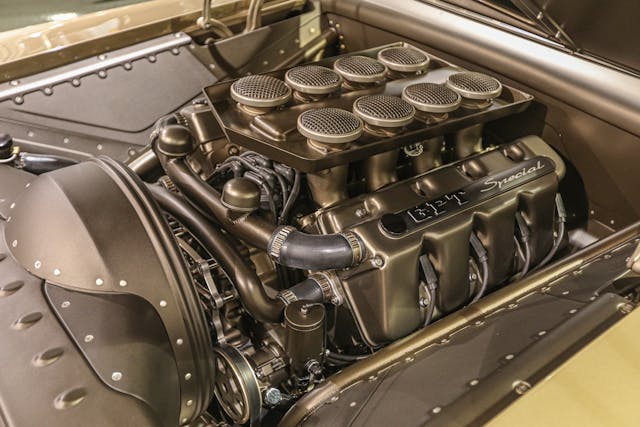
Like the large-displacement big-blocks of Ford’s competitors, most of the 385 Series V-8s found their way into heavy passenger cars or 3/4- and 1-ton pickups, a workhorse role they filled into the 1990s, when the 460 V-8 was installed into scores of Super Duty trucks. However, the 385 Series—so named because of the 460 V-8’s 3.85-inch stroke—also gave birth to the 429 V-8, which used the same big, 4.36-inch bore but paired it with a 3.59-inch stroke.
The Boss 429 used the same bore and stroke combination but added monster heads with huge valves. Rather than placing all of the valves in a line, which is typically the case in wedge-shaped combustion chamber heads—shown below, on the left—the Boss 429 used hemispherical combustion chambers with valves canted away from each other. These rare V-8s are valuable collector’s pieces today, but aftermarket heads are now available to get the look and performance using a standard 385 Series bottom end.
Modular
1991–present
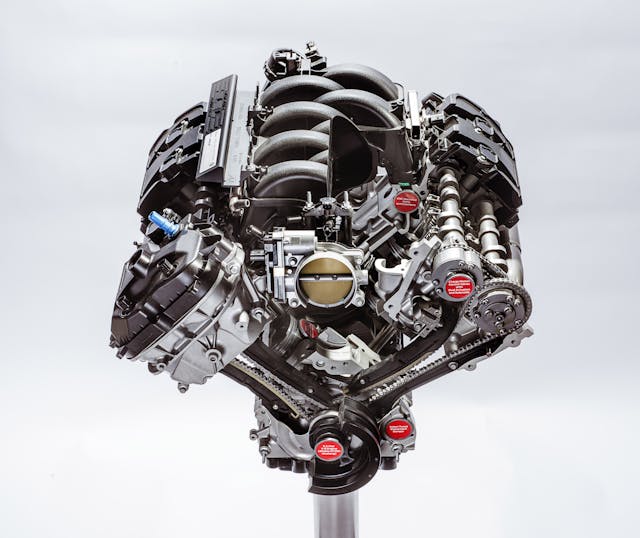
Plenty of Mustang enthusiasts were sad to see the 5.0 get replaced by the 4.6-liter two-valve, and we can’t blame them. When it launched, the Modular engine family didn’t have the huge aftermarket that the popular 5.0-liter Mustang GT had helped cultivate. In time, however, came better performing heads with three and eventually four valves per cylinder as well as increased displacement. The four-valve 4.6-liter was a solid performer, and plenty of drag racers have done impressive work with them, but it was the 5.0-liter Coyote that really cemented the Modular’s legendary status.
The 5.2-liter Voodoo engine found in the GT350 was the peak of naturally aspirated Modular performance at 526 hp. Swapping its flat-plane crank for a cross-plane piece and adding a massive supercharger created the 760-hp Predator engine found in the GT500. To this day, the Predator is Ford’s most powerful production engine.
Godzilla
2020–present
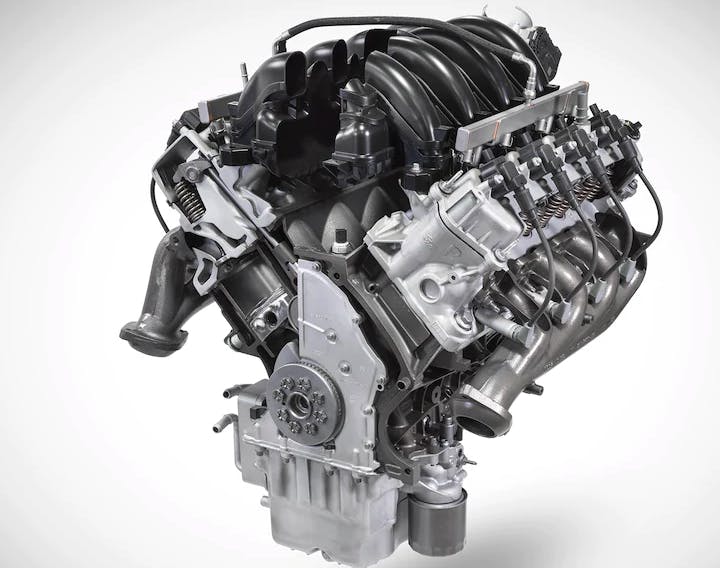
Ford has been all-in on OHC engines for passenger cars for decades, but it knew gasoline trucks need large displacement engines for making plenty of torque at low speeds. As the venerable 6.8-liter V-10 and 6.2-liter “Boss” SOHC V-8 were being phased out, a replacement was in order.
Enter “Godzilla,” a 7.3-liter monster that brings modern cylinder-head flow and precision manufacturing to a pushrod, two-valve V-8. In crate-engine form, it produces 430 hp and 475 lb-ft of torque. It is the largest V-8 currently produced by Ford and yet it has 4.53-inch bore spacing, meaning Godzilla is more of a small-block than a big-block.
We’re not sure how the aftermarket will respond to this engine, as it will be built in relatively low-volume due to its limited truck applications. That said, it’s still a big V-8, and all the usual hot-rodding tricks—like camshaft upgrades, cylinder head porting, and bolt-on exhaust headers—apply. We’re looking forward to seeing more of these engines under the hoods of classic Ford restomods in the future.
Those are our 10 favorite Ford engines, but of course, there are some that didn’t make the cut due to our arbitrary sense of taste. If you love either flavor of Y-Block, or perhaps a high-revving Ford NASCAR FR9 engine, make a case for it in the comments below.
***
Check out the Hagerty Media homepage so you don’t miss a single story, or better yet, bookmark it. To get our best stories delivered right to your inbox, subscribe to our newsletters.


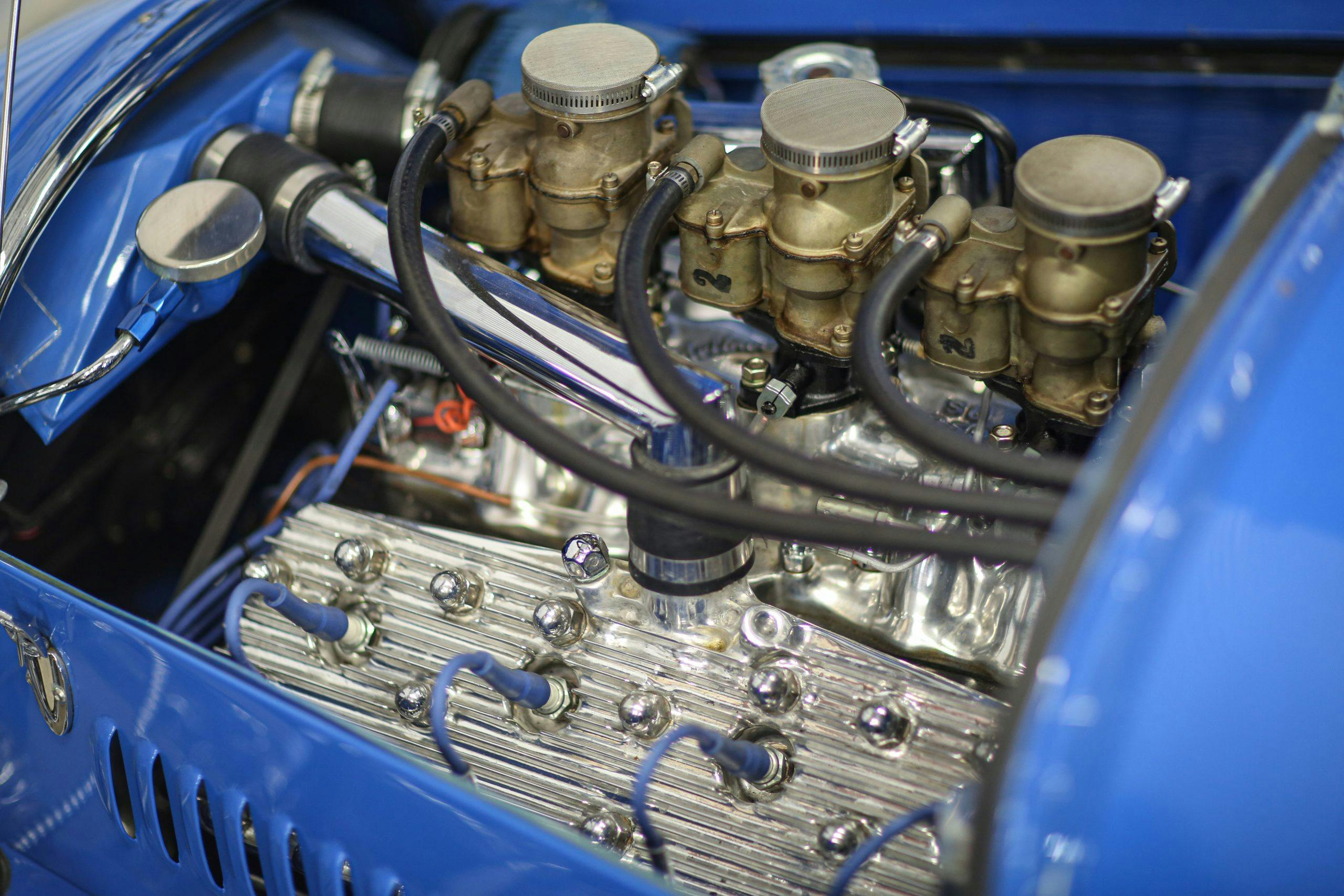
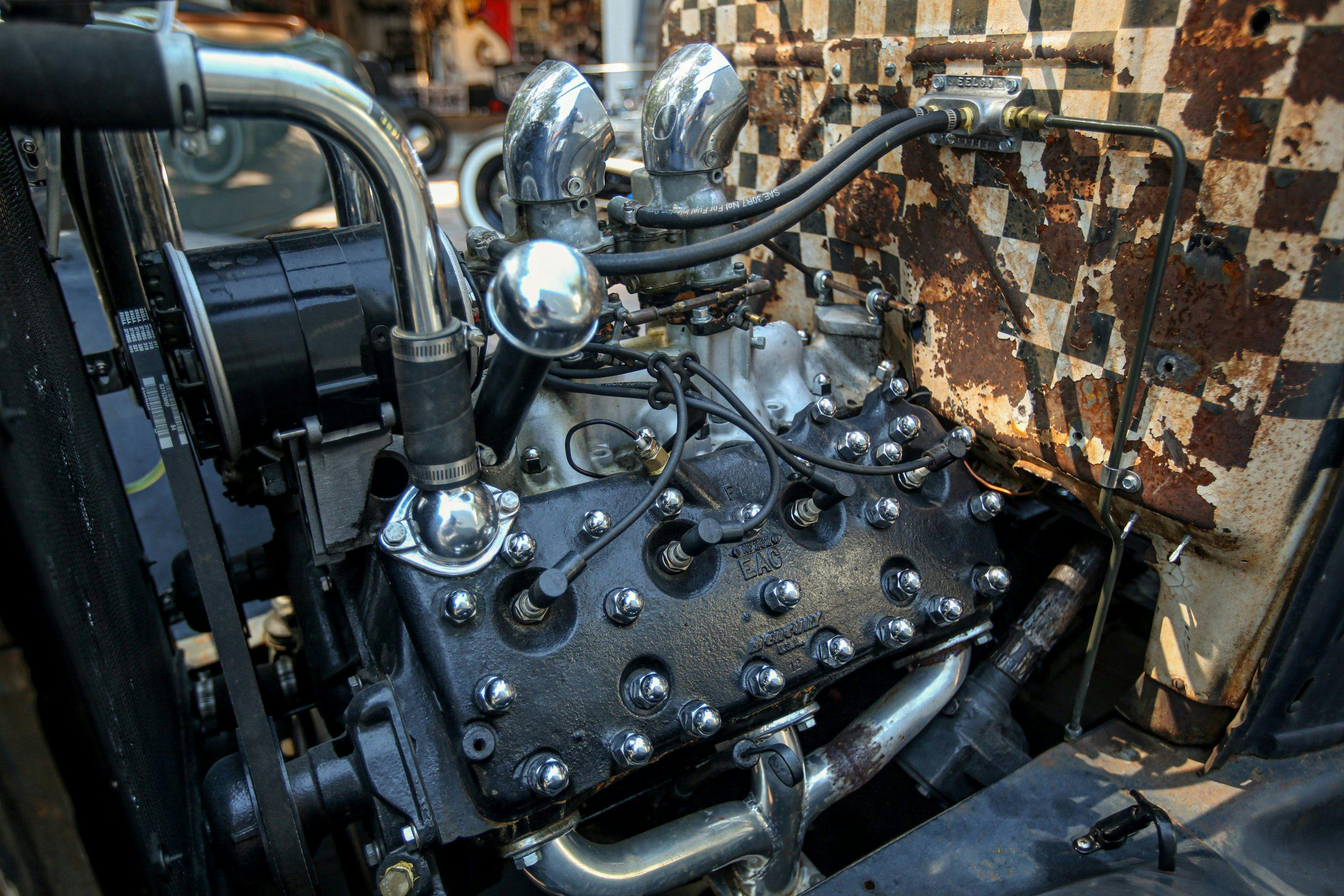
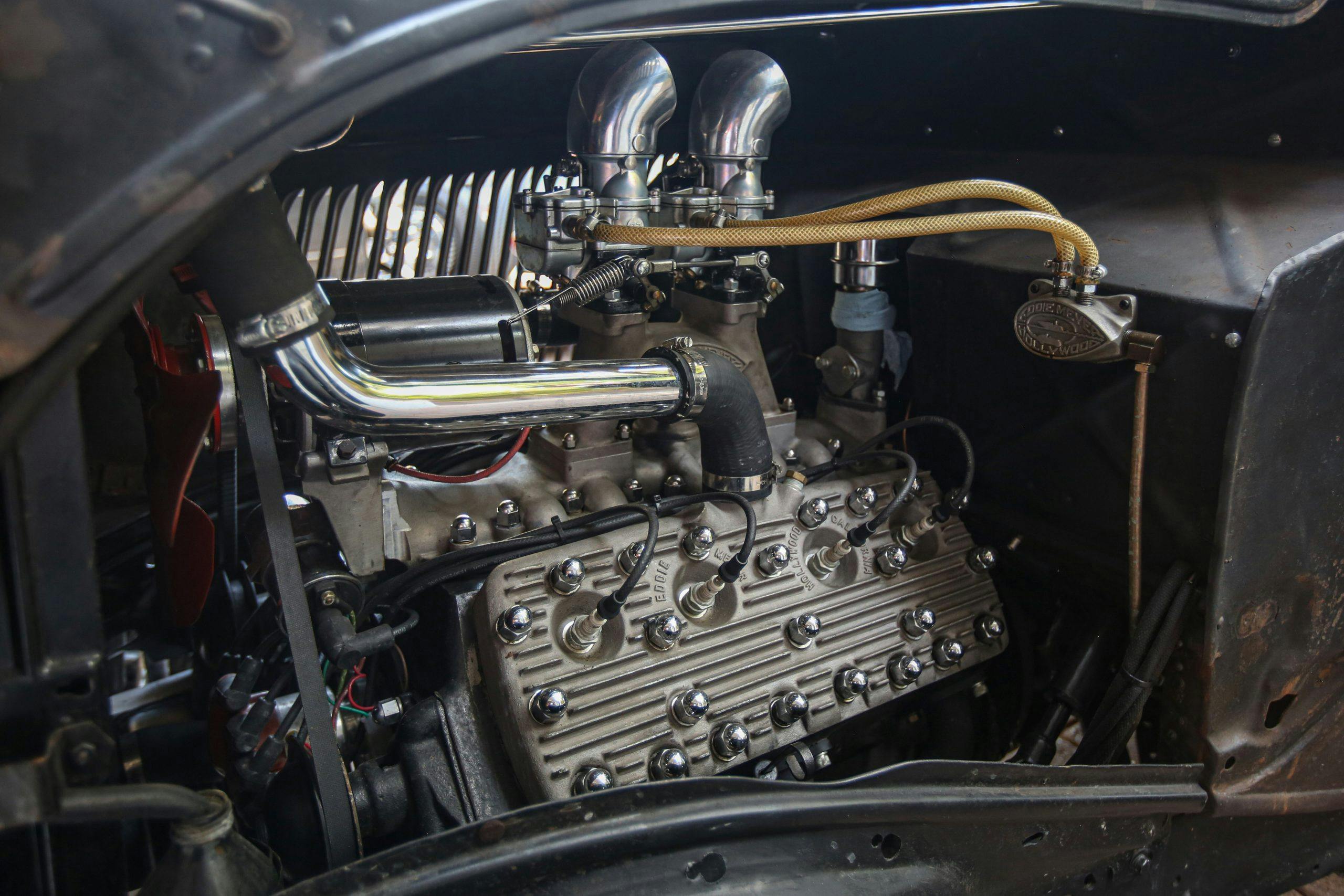

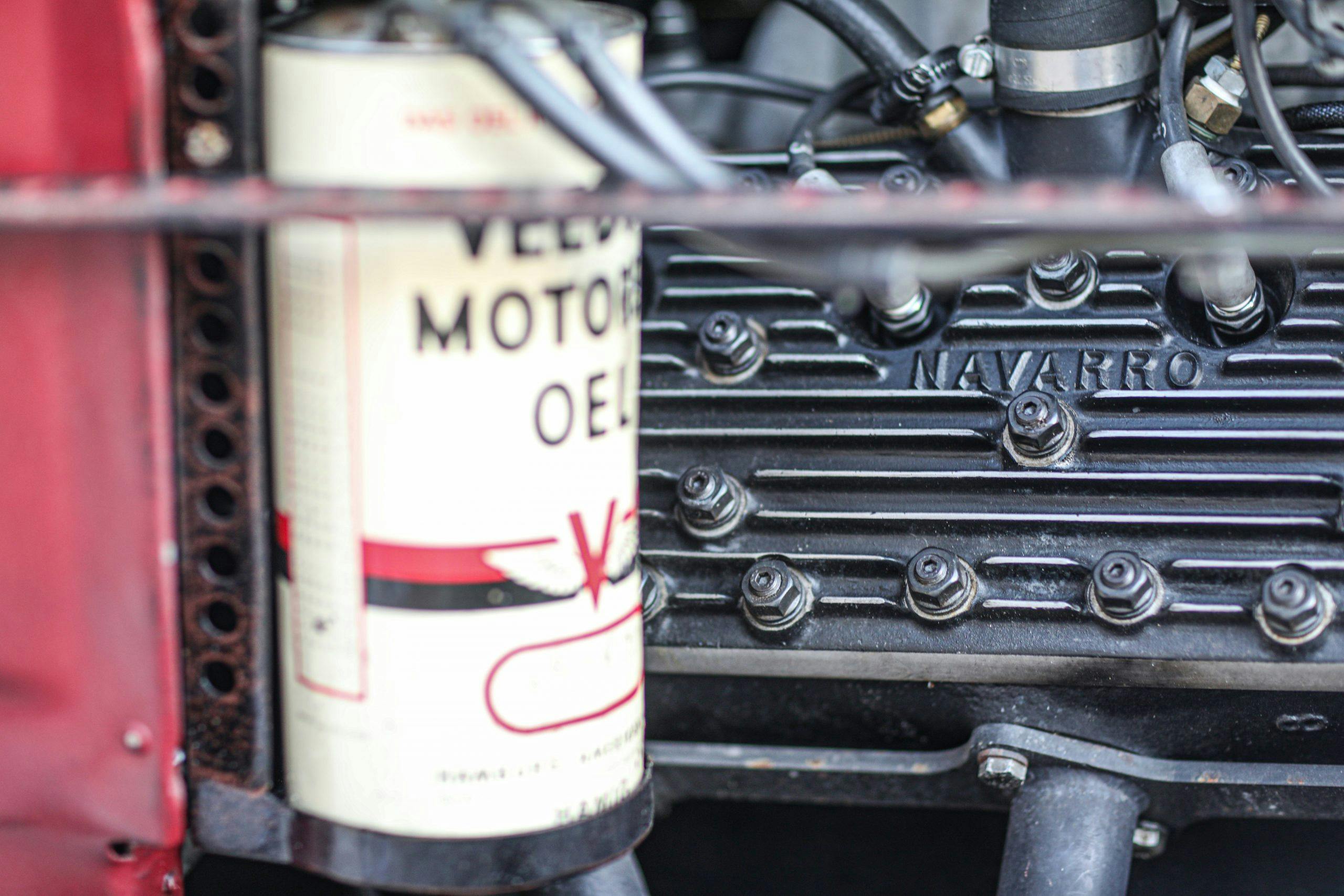
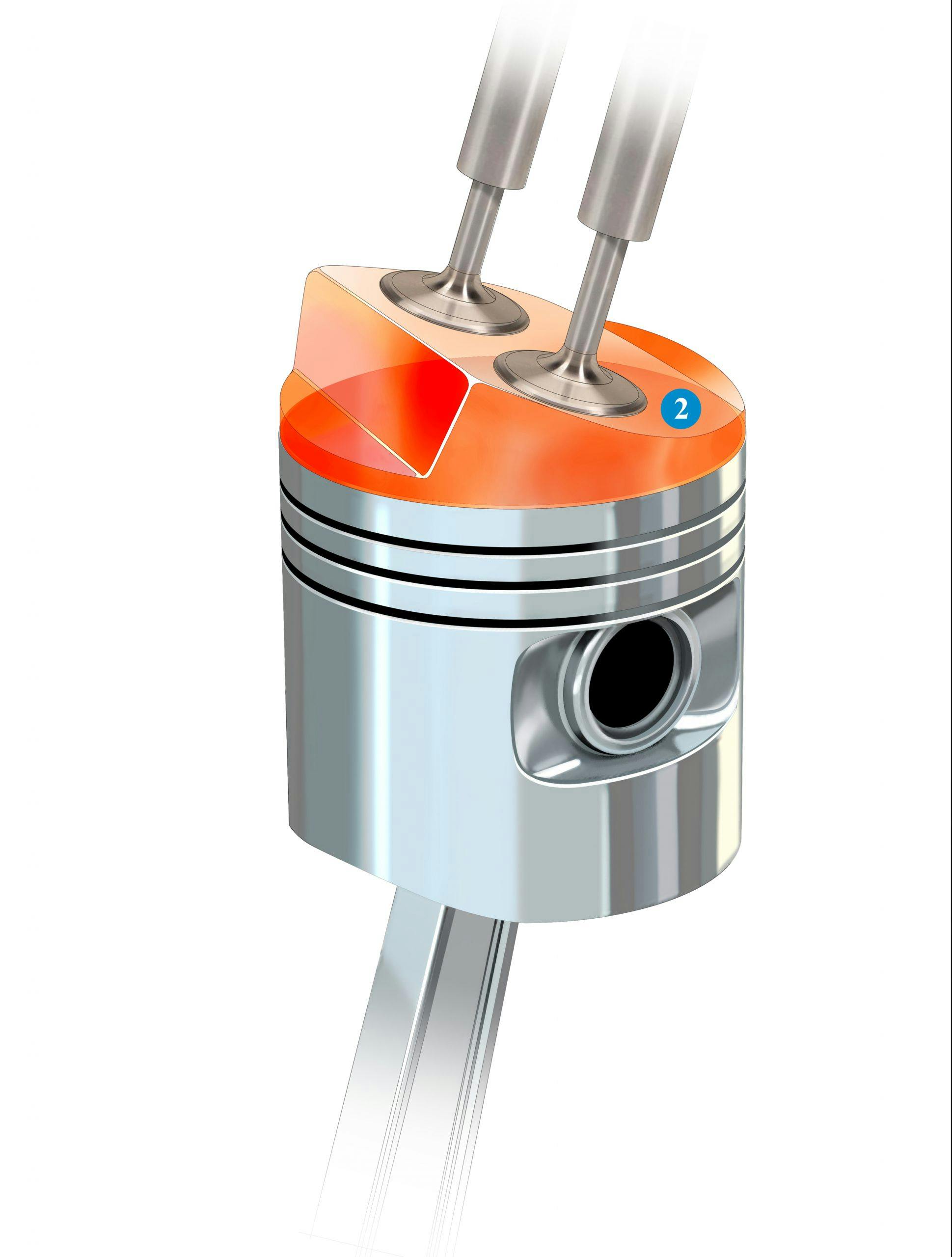
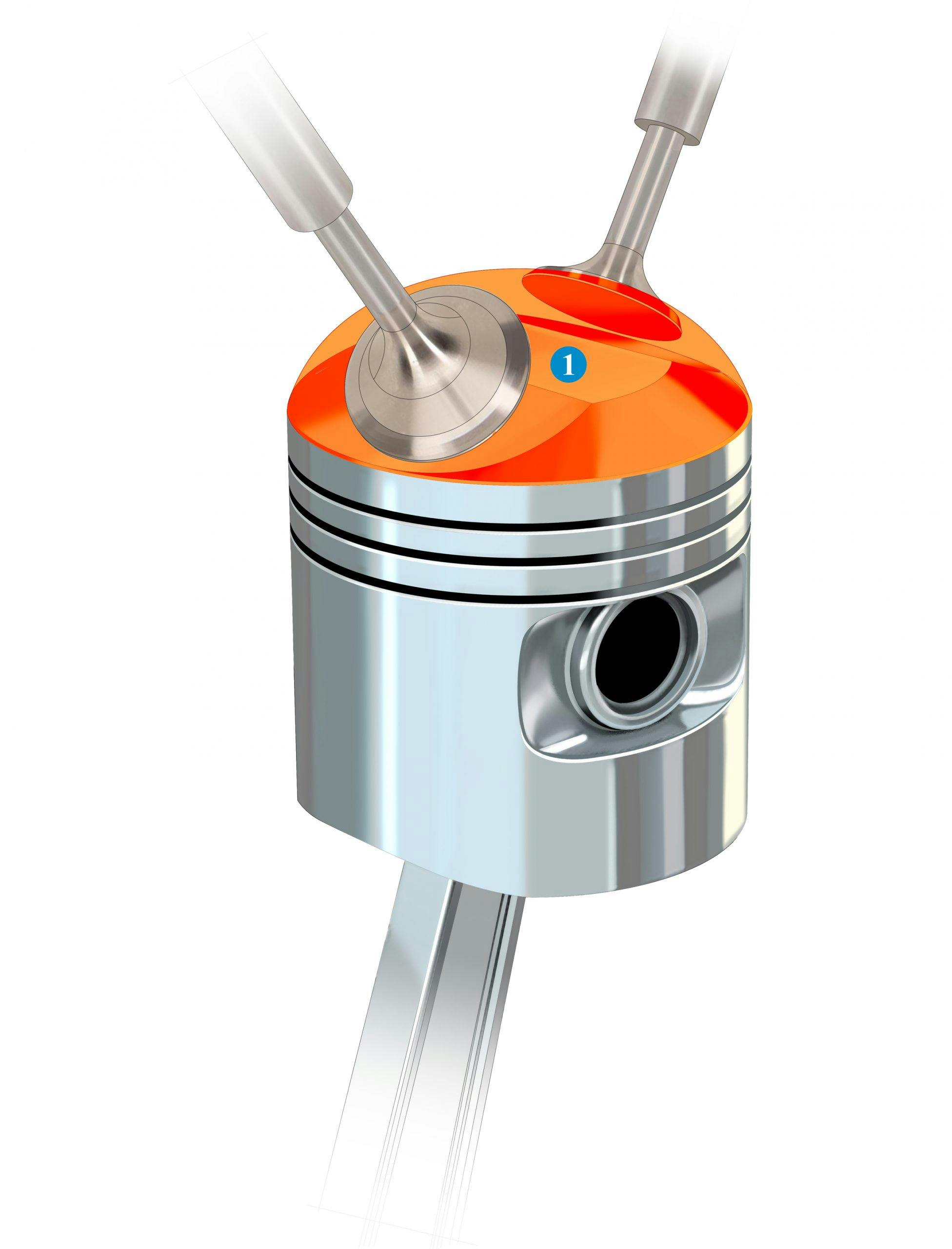


Regarding the GAA V-8, why would it be a flat plane crank if used in tanks? Wouldn’t a tank need a heavy flywheel setup with a big counter weighted crankshaft to generate massive torque? I don’t see the reasoning for a high, fast, revving motor in this application.
Engineers out there?
It’s not high-revving motor at all. Its peak power came at 2,600rpm. A flat-plane crank is easier to build. Heavy flywheels and counter-weighted cranks don’t generate torque, they store energy.
You forgot to list the Y-Block Ford engine. Y-Block powered 57 Fords dominated NASCAR and USAC, finished First and Second at Pikes Peak, set over 500 new records at Bonneville during” The longest left-hand turn”, won the Schneider Cup at the Indianapolis speedway And remained competitive in NHRA and AHRA drag racing through the 1960s. Some were virtually unbeatable in their drag racing classes.
Right, the Y-blocks in trucks had a forged steel crank, and Edelbrock made a tri power manifold for them
I was a little disappointed to not see it mentioned myself. Very good V8!
Nothing can compare to smooth sweet sound of a flathead V8 properly tuned with low flow exhaust. Yup, I’m old school ! BTW, Chrysler’s hemi was a 426, not a 427.
And Ford’s 427 was actually a 425.
And wasn’t the Merc a 428?
Oh, there was nothing like the scream of that non boosted 256 cu in Indy V8 with its “snake nest” exhaust headers. Ford sold the rights to their Indy V8 to AJ Foyt, who went on to develop it more and won Indy again with it in 1977. His quote about that race being the most satisfying win of all; “I had my own race car, we built it, I drove it, it was my own motor, and nobody’s going to ever break that record.”
Regarding the Godzilla engine, a friend works for a public utility with their newer F500 bucket trucks equipped and swears if you don’t watch out you can chirp the duallys when taking off. Even if untrue, this engine still has loads of low end torque.
How does the Voodoo not make this list?
Agreed, the Voodoo engine is the pinnacle Ford V8
The voodoo did make the list as it’s included in the modular engine group. Read the last paraphrase of the modular write up.
*paragraph
It’s at the end of the Mod section
The Voodoo IS on the list, in the Modular section. I am thoroughly enjoying the one in my GT350!
VooDoo and the Predator are included in the modular section.
It does. Listed under Modular.
I used a 368 ’56 Lincoln engine in my first Hot Rod, a channeled Model A Roadster. This was in the ford truck family early on. Didn’t really have to modify it, since it was 400 ft-lbs of torque and the car weighed 1900 lbs or so. (no money for mods anyway).
The other engine I currently deal with is the 3.9l DOHC T-bird ’02 to ’05. Also used in the baby Lincoln LS ’00 to ’06. Also known as the AJ 35, designed for Jaguar and used in many Jags and Land rovers. All aluminum, and simple cam on shim valve set up ( like several Japanese Motorcycle manufacturers).
I have a 390 FE in my 66 Galaxie 500, great motor. It has Edelbrock performer series package camshaft, lifters, intake, and carb. And Hooker Super competition headers, with 2 1/2 inch exhaust, with Flowmaster 40s. It runs and sounds great.
Just a couple pieces to add,
The Y block was I believe the first Ford V8 produced with a supercharged option (312 CI). The Indy V8 was based on the Windsor architecture I believe.
So many interesting FE variants, including 427 tunnel port.
Thanks for a great / brief review.
all these engines had their good spots. I have rebuilt many engines and after looking at the wear incountered after 100 K or so the 390 appeared to have less wear for those miles. cl
Agreed. I have had several 390 trucks and the engines just last and last.
In the late ’70s I bought a ’72 2-ton truck with a 390. It had had a parking lot sweeper on it, and I bought it with bare frame and built a stake bed on it for hauling firewood out of the mountains. Don’t remember the mileage on it when I got it (but it was lots) or when I sold it (but it was lots more) – and the ONLY thing I ever had to do under the hood was change oil on filters. The dang thing started and ran great and pulled many, many loads of wood, plus hauled furniture (for friends who were moving) on a 500-mile trip, dirt bikes into and out of the hills, and even took a Jeep CJ on its bed up to deer camp once or twice. I was never a “Ford Guy” per se, but that old FE was a heckuva engine and I’d sure like it if that truck was still parked here at the ranch!
I couldn’t agree more that the FE series show minimal wear after many miles. The winner in my family was my ’71 LTD that came through the assembly line with the 400. At 160,000 miles the frame had rotted beyond repair of the day. Over the years my dad would borrow my car from time to time and had been favorably impressed with that engine, always having run flawlessly, never burning oil, or ever having to be opened-up for an internal repair. Dad pulled that engine for future use before the rest of the car went to the junk yard.
The only thing I know of that would get those engines was using cheap low octane gas thus causing exhaust valves to burn out.
I’m a firm believer that any engine deserves the best, so I only buy premium octane gas, Shell V-Power being my number one choice.
I like the Y-blocks. If they are set up to breathe with better intakes and exhaust, and a little more compression, they run better. John Mummert knows how to get them to run strong. He also made me a custom flywheel to bolt a wide ratio toploader right up to the bellhousing. The early blocks were less porous than later ones, and could be bored out further. My 56 272 is punched out to .030 over a 312 bore; 312/292/272 pistons all same wrist pin to top deck distance. Balanced, blueprinted, aluminum 4-barrel Mummert intake, headers with CC insert baffles…it roars!
Can’t help it, I still love the old Flathead!
Flatheads forever!!! With Aluminum heads and multi Strombergs they are beautiful!!!
I have a 8RT for my 1942 1 ton Ford.
I am looking for suggestions which “modern” Ford V8 could replace it.
Of course I want ”availibility”, “reliability ”, and not “expensive”.
Being able to connect to the 4 speed transmission (with PTO) is desired.
I’m not looking to hot rod the truck, just make it better for farm work.
Seriously??
Arguable the most interesting V8 is the Flat Plane 5.2 in the GT350.
This naturally aspirated engine make 526 emissions legal horsepower! And its sound is nothing short of intoxicating.
You dropped the ball on this one.
The 5.2L Voodoo is in the Modular section.
The 289 of course. Had the 271 hp in my 1956 Austin Healey 100.
Not much could touch it.
The poor man’s Cobra.
Today I have a 4 liter V8, Morgan +8 [Factory installed]
As a former BT7/FoMoCo 289 swap builder/owner and a devout appreciator of the work of Gerry Coker, whether it’s found in Donald Healey or Carroll Shelby’s marketing successes. I’ll opine the Healey is surely NOT a poorman’s Cobra, it’s a terrific auto in its own right and with 289 power, surely has the balls of the 289 Corbra.
Yes, Coker created the roadster sheetmetal for Healey at least 10 years before Shelby brought him on to do the first AC conversions.. In fact Shelby first asked Healey to build the engine swap auto. Healey … or maybe BMC … declined.
I continue to lust after a Kirkham. If I ever do it, I’ll have it done with an iteration of Gerry Coker’s BT7 dash in it. Far more attractive than Shelby’s Texas used car salesman’s backyard dream of a dash.
Gerry Coker drew two stunning, now iconic autos, and gets zero credit for them.
I bought a used 2010 Ford Expedition EL with a V-8 engine with 86,000 miles on it. I bought it from an authorized Lincoln dealer in Michigan. Had nothing but problems from almost a month after I bought it. Engine light came on, took it to the dealer and they changed a sensor, but light came back on. This went on two more times changing two more sensors, total bill over $500 for 3 sensors that did nothing to correct the problem. They gave up and told me to go to a different Ford dealer to tear apart the engine to see what was wrong! I asked them to have a Ford representative come out to look at it as we are just outside Dearborn and it is their product! Keep in mind, since I owned the vehicle, I changed the oil every 6k miles faithfully, substituting a quart of oil with Lucas oil. Of course, Ford will not take responsibility for the engine they designed. I gave up, and drove it as-is. Finally, the engine started running very rough, stalling, balking, you name it. Then I found out through a mechanic and doing research that this is a dog engine, bad cam that Ford knows about but because they built so many of them, it would be too costly for them to replace an engine they built so many of. Because if this, I will never, ever buy any Ford product again and I tell everyone I know! My husband needed a new dually diesel heavy duty and I told him to buy the 2020 Chevy 3500 HD with the Duramax – wow! Great truck! Great gas mileage! No catalytic converter to get stolen! Love my Chevy and all the past Chevys I have owned!
Same cam story with our 1960 Ford Galaxie. After 2 years an an almost engine fire, my folks traded it in for an Oldsmobile. I remain a Ford fan, though. Any car maker can and do make lemons.
I grew up in the ’50s and 60′ on a series of used-car dealerships owned by members of my family. By age 14, I was doing serious mechanical repair work on all makes and models.
I agree with many here that the flat-head was a decent engine, as robust as those of its competitors of the day. Yet my experience with the OHV Ford V8 engines produced during those decades, I’m afraid, is quite negative. It did’t extend to Ford six-cylinder engines, however. In fact, I thought their durability and reliability excellent.
In 1987, much against my better judgment, I bought my only Ford, a year-old F-150 equipped with an electronically injected 5.0 L engine. Even now, almost four decades later, I can’t begin to recount the scope and seriousness of the many problems I encountered with that engine without risking a rise in blood pressure.
I realize, of course, that mine is a minority opinion here. Yet it’s an opinion formed first-hand, having worked in repair garages on many Ford V8 engines and as the owner of one.
Some here will point out that later Ford V8 engines, like all engines, are better engineered and manufactured than their predecessors. Without direct knowledge (I haven’t worked on cars in many years), I accept their argument without qualification. Yet, considering the breadth of options available by a plethora of manufacturers, my longstanding adverse experience with Ford V* engines militates against ever considering to buy a vehicle powered by one.
Same note as Ronald: I once bought a 1979 Pontiac Firebird for a great price, that still had the Chevy 350 engine in it that it was born with. It was running rough, and with relatively low mileage I thought it just needed at tuneup. I learned that hard way that there had been a problem that year with the cams, and sure enough mine had to come out, most lobes were practically as round as a doughnut. Again, all the manufacturers have had great successes and some pretty big failures…
those were the chev blue painted engines ,, had a problem with the hardening process ,,, should have kept painting them orange ha ha ha
Had chevys and could not keep a motor together. I have Fords know and no problems.
To bad your spell check doesn’t correct grammer!
I had a new Chevy truck that used two quarts of oil a day. When torn down it had no rings. TRUTH! I work for a company that bought 3 new chevys a year and one year when driven from the dealership the one I drove never shifted into high gear and the other two wouldn’t start after shut off. This was typical of these Chevys. We always had trouble with them and the front ends were not up to the oilfield and had serious issues. We drive fords now. You can get bad ones of any make but ford hands down makes the most durable engines and absolutely the best truck on the planet. Drive what you want but you will get what you pay for. Chevy sucks hard especially when it comes to trucks!
My dad was a plumber and electrician and bought 13 new Chevy half ton pickups in his life and never had a major problem with any of them. The worst one was the ’82 diesel, but that was just because it was a dog to start with.
Ford’s V8’s never made the torque Chevy’s did, which they finally acknowledged when they gave up on the OHC design for the OHV Godzilla truck engine.
One time at band camp…
Best comment in this string award goes to…Reinhold Weege! 😂
Agreed! That’s funny right there; I tell you what… 🙂
Never fails! There is always the one guy that turns any commentary on a particular brand into a gripe session about somethng he bought a decade or more ago, and used at that, and he decided they are all no good at all.
Like the Flathead, the Y-Block has it own unique (beautiful) sound and is another favorite of vintage hotrodders, with loads of engine jewelry. It should be included because it is the original deep-skirt block design that paved the way for the other Big-Block successors.
Can’t believe you would leave out the y-block. Fords first real performance engine although ford was reluctant to pursue it further than they did.
I was surprised you didn’t mention the 406 cid engine introduced in 1962, that could be had with trips. The 430 with the same tri-power option was a boat anchor in comparison. A full sized Galaxie was not even an impediment to the 406’s out put.
The 406 was a brief bump in the road on the way to the 427 . . . . they didn’t mention the 410 either.
The 410 is not a factory Ford build but a 390 with a 428 crankshaft.
So how did all those 410’s get fitted in mid-1960’s Mercury’s (in addition to the 410 CID FE that was a different combination of parts in the Mercury-platform 1958 Edsel’s)?
The 410 was a factory Mercury offering in 66 & 67. Correct in the fact it was a 390 block with a 428 crankshaft.
Thanks for your acknowledgment of the 406 available 1962. I tried to trade my 56 BelAir convertible on a Chesnut colored Galaxie 2 door hardtop 4 speed with the 406 and 3 deuces. Guess the dealer didn’t want my Chevy as we couldn’t come to a deal. I ordered a red 62 Impala 409/409, 4 speed instead. Reason for this response is that enough people have told me that there were only 390’s with 405 HP or 427’s with 425 HP that I was beginning to doubt my poor old brain. I can still see the gold 406 crossed flag emblem just behind the front wheel opening.
Had the 3×2 intake from a 406 on my 428 falcon with 300duration and 520 lift. The most dangerous street car I ever had but man it was fun. 7500 rpm 428 is stupid fast in a 2500lb street car. No NOS needed.